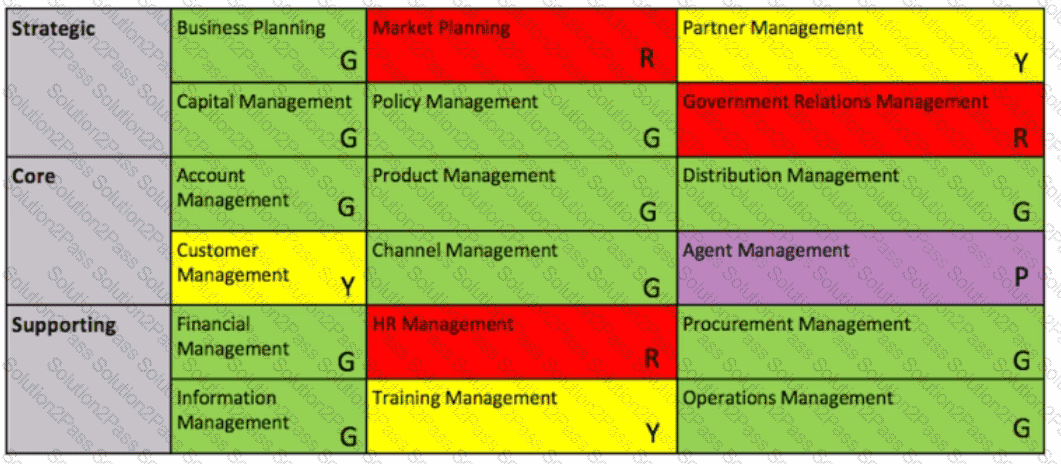OGBA-101 The Open Group TOGAF Business Architecture Foundation Exam Free Practice Exam Questions (2025 Updated)
Prepare effectively for your The Open Group OGBA-101 TOGAF Business Architecture Foundation Exam certification with our extensive collection of free, high-quality practice questions. Each question is designed to mirror the actual exam format and objectives, complete with comprehensive answers and detailed explanations. Our materials are regularly updated for 2025, ensuring you have the most current resources to build confidence and succeed on your first attempt.
Which of the following can be used to help define information concepts in an information map?
Which statement best describes iteration and the ADM?
Where are business scenarios used most prominently in the TOGAF ADM?
Which of the following describes how business models are used within the TOGAF standard?
Which of the following is included as part of the practice of Architecture Governance?
Consider the following chart:
Which important concept for Enterprise Architecture Practitioners does it illustrate?
Which of the following is guidance for creating value streams?
Consider the following business capability map. where cells of a model are given different colors to represent maturity levels (note the letters G, R. Y. P also denote the colors used = Green, Red. Yellow and Purple):

Which of the following best describes this technique?
In the ADM, what is the name for a document deliverable that has completed a review and is approved?
Complete the sentence. A business model is a description of the rationale for how an organization creates, delivers, and captures
Which of the following best describes why business model innovation should be approached in a structured manner?
Which of the following is the element of a value stream stage that describes the state change that triggers the value stream stage?
Which of the following best describes the purpose of the Gap Analysis technique?
Which statement about Requirements Management Is most correct?
Which of the following are two of the four purposes that help frame the planning horizon, depth, and breadth of an Architecture Project?
1. Architecture to Support Strategy
2. Architecture to Support Capability
3. Architecture to Support Portfolio
4. Architecture to Support Agility
Which of the following best describes information mapping?
Consider the following ADM phases objectives.

Which phase does each objective match?
Which of the following is a difference between an organization map and an organization chart?
Which of the following best describes where business scenarios are used in the TOGAF ADM?
What process is used to decompose a set of business capabilities to communicate more detail?
